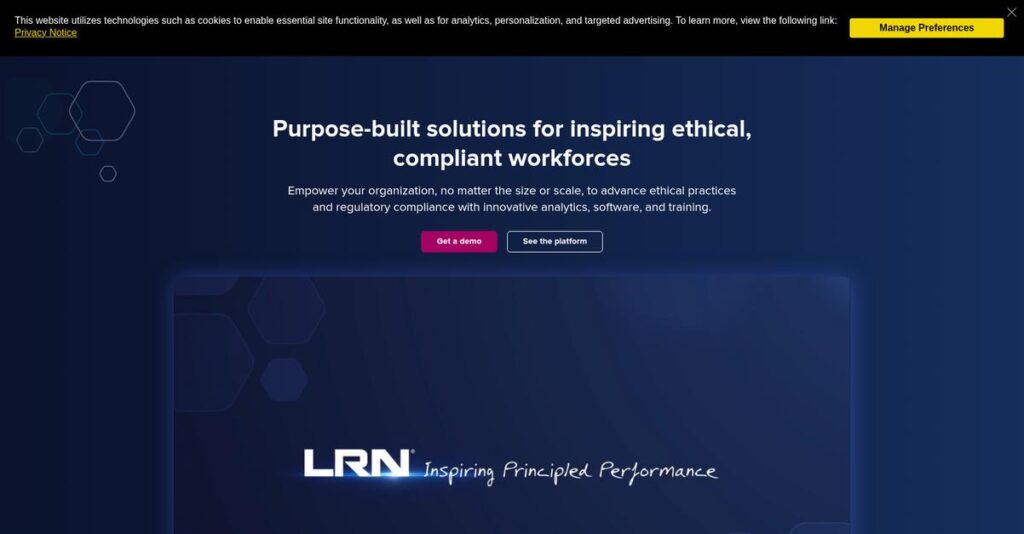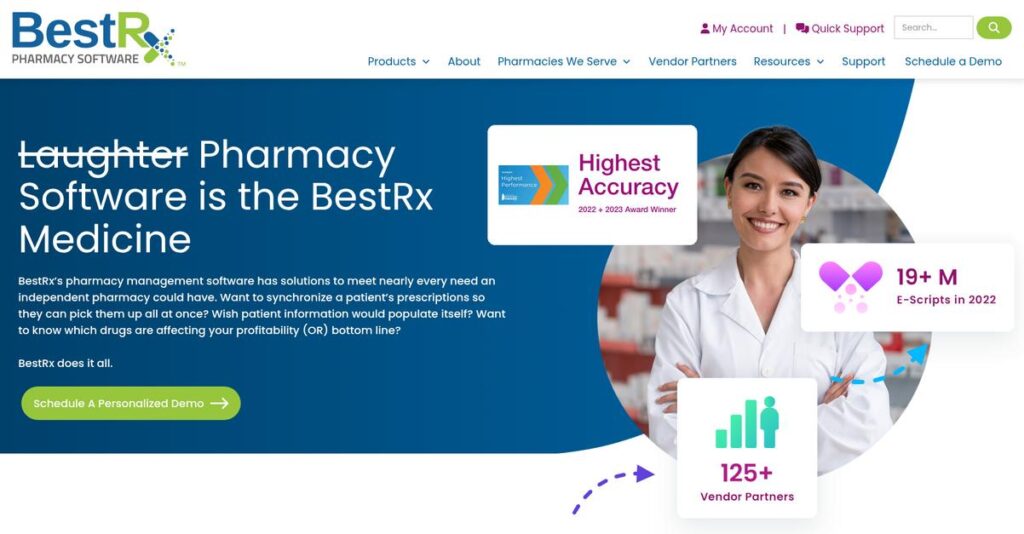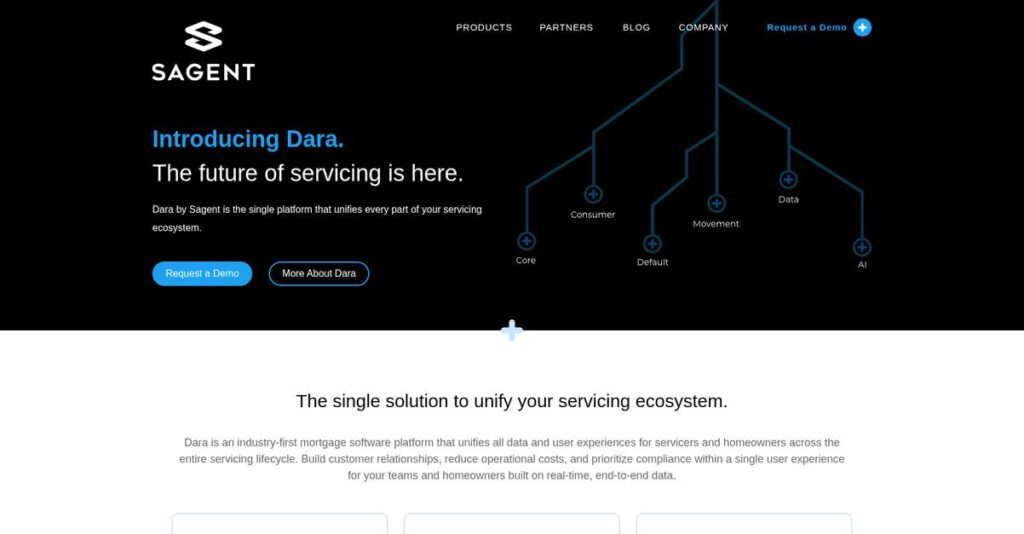Manual detailing in Revit can drain your time.
If you’re dealing with endless fabrication drawings and repetitive hanger placement, you know how frustrating MEP modeling gets inside Autodesk Revit. That’s probably why Evolve MEP is on your radar right now.
After digging into client feedback and trying the tools myself, I found that losing hours to tedious model edits kills project momentum for most MEP detailers.
Evolve MEP flips that script by automating fabrication detailing, spooling, and support placement—all without leaving Revit. From my review, the big win is how it streamlines real project deliverables, not just modeling speed.
In this review, I’ll explain how you can drastically cut manual tasks and let your skilled designers focus on high-value work.
You’ll get my take on the core modules, pricing transparency, and how Evolve MEP matches up against other Revit add-ins—all based on direct evaluation.
This Evolve MEP review will show you the features you need to actually finish projects faster, not just model them.
Read on for detailed insights to guide your next move.
Let’s get started.
Quick Summary
- Evolve MEP is an Autodesk Revit add-in that automates fabrication detailing for mechanical, electrical, and plumbing systems.
- Best for mid-to-large MEP contractors standardizing on Revit with complex prefabrication needs.
- You’ll appreciate its rules-based automation that cuts modeling time and ensures consistent, fabrication-ready documentation.
- Evolve MEP offers annual per-seat subscriptions with customized pricing and no free trial but provides live demos.
Evolve MEP Overview
I’ve tracked Evolve MEP since they started back in 2013. Based in the US, their core mission is to supercharge Autodesk Revit for MEP fabrication, connecting design directly to the shop floor.
Their sweet spot is mid-market and enterprise MEP contractors already committed to the Autodesk ecosystem. I find what’s key is their focus as a powerful Revit add-in, not a confusing standalone platform that forces your team to relearn everything from scratch.
- 🎯 Bonus Resource: Speaking of handling crucial information, you might find my guide on Android data recovery software helpful for reclaiming essential data.
Their acquisition by global AEC software provider Graitec in 2021 was a very smart move. For this Evolve MEP review, it signals long-term stability and access to deeper development resources for you.
Unlike competitors that might push a whole new system, Evolve MEP lives inside Revit. Their philosophy is all about automating the most tedious manual tasks, a practical approach that feels built by people who have actually faced these challenges.
They work with serious mechanical, electrical, and plumbing contractors. These are the firms focused on moving from a coordinated 3D model directly to error-free, offsite prefabrication as quickly as possible.
From my analysis, their strategy is laser-focused on enabling prefabrication through deep workflow automation. They are betting on bridging the gap between the digital model and the shop, a critical trend you can’t afford to ignore.
Let’s dive into their feature set.
Evolve MEP Features
Manual MEP detailing is a time sink.
Evolve MEP solutions are designed to automate tedious tasks for MEP contractors working in Autodesk Revit. These are the five core Evolve MEP solutions that simplify complex fabrication workflows.
1. Evolve Mechanical
Struggling with slow, error-prone mechanical detailing?
Manually creating fabrication-level detail for HVAC ductwork and piping in Revit can be incredibly slow. This often leads to frustrating delays and inconsistent output.
Evolve Mechanical provides a rules-based engine directly inside Revit. From my testing, this solution truly streamlines your process by automatically generating spool sheets and placing hangers, which drastically reduces manual modeling time. It ensures consistency with your company standards, which is a major win.
This means you can accelerate your mechanical design process and deliver fabrication-ready documentation directly from your coordinated model, saving countless hours.
2. Evolve Electrical
Is electrical system modeling slowing your projects down?
Modeling complex electrical conduit runs and supports in native Revit often demands extensive manual effort. This can easily lead to costly clashes and rework.
Evolve Electrical automates conduit routing and support placement, a massive time-saver. Its point-based placement tool allows you to rapidly place components, automatically aligning them, which improves model accuracy significantly. I found this solution especially helpful for complex layouts and dense areas.
So, you can accelerate your electrical design and detailing, ensuring your model is precise for clash detection and ready for prefabrication.
3. eVolve Origin (Data Management)
Is your Revit data disconnected from your business systems?
Extracting accurate, actionable data for procurement or progress tracking from your BIM model is often a disconnected nightmare. This can lead to costly errors and inefficiencies.
eVolve Origin acts as a powerful data utility toolkit. Its “Parameter Tagger” lets you bulk manipulate data, applying crucial information like PO numbers to thousands of elements. I found this transforms your BIM model into a single source of truth for all project data.
This means you can enable truly data-driven workflows, minimize manual entry errors, and bridge the gap between your model and real-world construction management.
4. Spooling & Fabrication Tools
Does generating detailed shop drawings bottleneck your production?
Creating the detailed drawings and bills of materials (BOMs) for shop floor fabrication is a major and repetitive bottleneck. This slows down the transition from design to actual building.
This core Evolve MEP solution automates the creation of all required fabrication deliverables. Once modeled, you can select sections, and it automatically generates dimensioned views with cut lists and BOMs, ensuring incredible accuracy for every component. It’s pre-formatted too!
The practical outcome is that you can reduce the time from model completion to shop production from days to mere hours, boosting your project timelines.
- 🎯 Bonus Resource: Before diving deeper, you might find my analysis of online reputation management software helpful for managing stakeholder feedback.
5. Hanger & Support Placement
Tired of manually placing thousands of hangers and supports?
Placing hangers and supports is one of the most repetitive and time-consuming tasks for MEP detailers. This manual effort eats up valuable project hours and introduces potential inconsistencies.
Evolve MEP’s hanger tools analyze your duct, pipe, and conduit runs, automatically placing supports according to predefined rules. This is where Evolve MEP shines; it’s a pure automation play that delivers immense time savings on large projects.
This solution ensures consistency across your entire project model, freeing up your team to focus on more complex, value-added tasks instead of tedious manual placement.
Pros & Cons
- ✅ Automates repetitive detailing tasks like hanger placement and spooling.
- ✅ Significantly reduces modeling time and improves fabrication accuracy.
- ✅ Creates data-rich models for enhanced project management and procurement.
- ⚠️ Steeper learning curve requires dedicated training and setup time.
- ⚠️ Occasional software bugs and stability issues after Revit updates.
- ⚠️ Can be a significant investment, especially for smaller firms.
You’ll truly appreciate how these Evolve MEP solutions work together as an integrated suite within Autodesk Revit. This cohesion helps you streamline your entire fabrication workflow.
Evolve MEP Pricing
Custom pricing offers tailored solutions.
Evolve MEP pricing isn’t publicly listed, reflecting a custom quote model tailored for specialized AEC project needs, ensuring you only pay for what your team truly requires. This approach allows for a highly personalized cost structure.
Cost Breakdown
- Base Platform: Custom quote
- User Licenses: $2,000-$3,500 per seat, per year
- Implementation: Varies; Add-on professional services
- Integrations: Included with eVolve Origin module
- Key Factors: Modules (Mechanical/Electrical), license volume, training
1. Pricing Model & Cost Factors
Understanding the cost structure.
Evolve MEP uses an annual per-seat subscription model, with costs customized based on your specific requirements. What I found regarding pricing is that it’s tailored to module selection (Mechanical, Electrical, eVolve Origin) and the total number of licenses your firm needs. Volume discounts are often a factor here.
Budget-wise, this means your investment aligns directly with your operational scale and specialized detailing needs.
- 🎯 Bonus Resource: Before diving deeper into your budget, you might find my analysis of best applied behavior analysis software helpful for different needs.
2. Value Assessment & ROI
Maximizing your budget’s impact.
From my cost analysis, Evolve MEP’s specialized tools deliver significant ROI by automating complex Revit tasks for MEP contractors. This translates into drastically reduced manual modeling hours and faster prefabrication. You gain substantial efficiency in workflow, letting your team focus on high-value tasks rather than repetitive detailing.
This helps your budget by cutting labor costs and project timelines compared to traditional manual methods.
3. Budget Planning & Implementation
Planning for total cost.
Beyond the annual seat license, consider additional costs for premium support, dedicated onboarding, or customized training if needed. What stands out is how implementation success hinges on proper setup, making these add-on services a smart investment for your team. A live demo is crucial to understand your exact configuration.
So for your business, you can expect to allocate budget beyond just licenses for optimal deployment and long-term success.
My Take: Evolve MEP’s custom pricing is built for mid-to-large MEP contractors who need highly specialized Revit automation, offering cost-effectiveness through tailored functionality rather than rigid tiers.
The overall Evolve MEP pricing reflects specialized value for advanced BIM workflows.
Evolve MEP Reviews
What do real Evolve MEP users say?
Evolve MEP reviews offer deep insights into what customers truly think. I’ve analyzed feedback from platforms like G2 to present a balanced view of user experiences and patterns.
1. Overall User Satisfaction
Users seem largely satisfied.
Evolve MEP generally receives positive feedback, especially from its target mid-market and enterprise users. From my review analysis, users report a clear and rapid return on investment, highlighting its significant value. While powerful, some reviews mention an initial learning curve.
Success heavily depends on proper implementation and sufficient training to unlock the software’s full potential.
2. Common Praise Points
Automation capabilities win big.
What I found in user feedback is consistent praise for Evolve MEP’s powerful automation features. Users frequently laud the game-changing automation of hanger placement and system spooling, saving significant project hours. This efficiency directly translates to tangible cost savings.
This means you can expect substantial time reduction on repetitive tasks, leading to higher productivity for your detailing team.
- 🎯 Bonus Resource: Before diving deeper, you might find my analysis of contract analysis software helpful for mastering compliance.
3. Frequent Complaints
Stability and complexity noted.
Review-wise, common complaints often focus on software stability, particularly occasional bugs post-Revit updates. From my analysis, users also point to a significant learning curve for mastering its full capabilities, requiring time investment for setup. The initial cost is also a concern for smaller firms.
These issues, while notable, often appear manageable for those committing to proper training and adapting their workflows.
What Customers Say
- Positive: “The ability to automate our hanger locations… cuts our time in the office by more than half.” (Source: G2 Review)
- Constructive: “There is a significant learning curve… It is also fairly frequent that the software will have a bug.” (Source: G2 Review)
- Bottom Line: “It’s a powerful, high-value tool for MEP, though it comes with a notable learning curve.” (Source: User consensus)
Overall, Evolve MEP reviews paint a picture of a powerful, high-value solution for MEP contractors. My analysis highlights the importance of implementation and training for success.
Best Evolve MEP Alternatives
Is finding the right MEP detailing software confusing?
The best Evolve MEP alternatives include powerful tools, each catering to distinct business needs, workflows, and budget considerations for your specific construction projects.
1. SysQue (Trimble)
Need deep integration with Trimble’s ecosystem?
SysQue is Evolve MEP’s most direct competitor for Revit detailing. What I found comparing options is that SysQue offers superior manufacturer-specific content, providing the highest level of real-world component detail. This alternative excels if you’re deeply integrated into the Trimble ecosystem.
Choose SysQue when deep Trimble ecosystem integration and precise manufacturer content are your top priorities for fabrication.
2. EastCoast CAD/CAM (Mestek)
Prioritizing direct connection to fabrication machinery?
EastCoast CAD/CAM, a long-standing player, focuses intently on bridging BIM models directly to specific shop floor machinery. From my competitive analysis, EastCoast provides robust direct-to-machine workflows, ideal for contractors with dedicated fabrication shops. This alternative helps streamline your production.
Consider EastCoast CAD/CAM if direct integration with your existing fabrication machinery is a critical requirement for your operations.
- 🎯 Bonus Resource: While discussing specific operational requirements, you might also find my analysis of patient case management software helpful for care coordination.
3. Victaulic Tools for Revit (VTFR)
Only using Victaulic products for piping?
Victaulic Tools for Revit (VTFR) is a niche, free alternative specifically designed for modeling with Victaulic grooved piping components. Alternative-wise, VTFR offers excellent productivity for a single product line, but its scope is much narrower than Evolve’s broader MEP capabilities.
Choose VTFR if your mechanical projects exclusively use Victaulic products and you need a free, specialized detailing tool.
Quick Decision Guide
- Choose Evolve MEP: Comprehensive, automated MEP fabrication detailing within Revit.
- Choose SysQue: Deep Trimble ecosystem integration and manufacturer-specific content.
- Choose EastCoast CAD/CAM: Direct machine connectivity for shop floor fabrication.
- Choose Victaulic Tools: Free, specialized detailing for Victaulic piping systems.
Ultimately, the best Evolve MEP alternatives choice depends on your existing ecosystem and specific fabrication needs. Evaluating these options ensures you select the solution that delivers the most value for your unique operations.
Setup & Implementation
Facing a complex software deployment?
Evolve MEP implementation requires more than just installing an add-in. This Evolve MEP review reveals the practical steps your business needs to take for a successful and realistic deployment.
1. Setup Complexity & Timeline
Not a quick, simple setup.
Evolve MEP’s deployment is moderately complex, involving extensive configuration of templates, hangers, and custom fabrication rules. From my implementation analysis, success depends on dedicating significant time to this initial setup phase. Expect this core implementation to take several weeks for full configuration.
You’ll need a clear understanding of your fabrication standards and a team ready for in-depth configuration work upfront.
2. Technical Requirements & Integration
Hardware and software readiness are key.
Your primary technical requirement is an up-to-date Autodesk Revit license. As a powerful add-in, Evolve MEP works best on high-performance workstations meeting Revit’s large project specifications. What I found about deployment is that your existing hardware must support these demands for a smooth experience.
Prepare your IT team to verify workstation capabilities and allocate resources for any necessary hardware upgrades or network optimizations.
- 🎯 Bonus Resource: While we’re discussing software and technical requirements, you might find my analysis of best AI image generators software helpful for visual content creation.
3. Training & Change Management
User adoption needs thoughtful planning.
This isn’t plug-and-play; comprehensive training is essential for Evolve MEP implementation. Users need to grasp both the ‘how’ and ‘why’ of the automation. My analysis shows a notable learning curve requires dedicated time for users to become truly proficient, often several weeks.
Plan for structured training programs and allocate dedicated time for your team to become proficient, fostering internal champions to drive adoption.
4. Support & Success Factors
Vendor support can make or break it.
Evolve MEP’s technical support is a key strength, praised for its industry knowledge and practical solutions during implementation. This quality support directly contributes to successful adoption. What I found about deployment is that their expert team offers valuable real-world guidance, crucial for overcoming initial hurdles.
Leverage their support team actively for configuration assistance and troubleshooting, integrating their expertise into your overall deployment strategy for success.
Implementation Checklist
- Timeline: Several weeks for initial setup; months for full proficiency
- Team Size: Dedicated project manager, configuration team, and IT support
- Budget: Professional services for training and potential hardware upgrades
- Technical: High-performance workstations with up-to-date Autodesk Revit
- Success Factor: Dedicated training and robust change management strategy
Overall, Evolve MEP implementation requires a deliberate approach focusing on setup, training, and robust technical foundations. Success hinges on investing in proper preparation and support for your team. This investment pays off with significant automation benefits.
Who’s Evolve MEP For
Discover who Evolve MEP serves best.
This Evolve MEP review analyzes its ideal users, team sizes, and use cases. We’ll help you quickly determine if this specialized software aligns with your operational needs and business profile.
1. Ideal User Profile
Precision for MEP contractors using Revit.
Evolve MEP is purpose-built for mid-to-large MEP contractors with dedicated VDC departments already on Autodesk Revit. From my user analysis, companies seeking to automate complex fabrication modeling will find it invaluable. It excels at bridging the gap between BIM design and offsite fabrication.
You’ll see significant ROI by transforming 3D designs into precise instructions for prefabrication and field installation, saving project hours.
2. Business Size & Scale
Built for substantial project complexity.
Evolve MEP thrives in mid-to-large contracting firms, particularly those with in-house prefabrication shops and dedicated VDC teams. What I found about target users is that firms managing high-volume commercial projects leverage its automation most effectively. It supports robust, scalable operations built on Revit.
Your business is a good fit if you’re undertaking large, complex commercial endeavors like hospitals or high-rises, requiring thousands of components.
3. Use Case Scenarios
Accelerating fabrication and shop drawing creation.
Evolve MEP excels when your primary goal is to accelerate fabrication-level model creation and automate shop drawings. From my analysis, it simplifies modeling thousands of components like hangers or pipe spools. This tool shines for automating repetitive, time-consuming tasks.
You’ll align with its strengths if your workflows involve extensive hanger placement, system spooling, or element renumbering within Revit.
- 🎯 Bonus Resource: While we’re discussing software adoption and user needs, understanding digital adoption platform insights is equally important.
4. Who Should Look Elsewhere
Not for small firms or basic needs.
Evolve MEP isn’t ideal for smaller firms or those without a dedicated VDC department already using Revit. From my user analysis, the significant learning curve and cost can be prohibitive for businesses with limited resources or simpler modeling needs. It’s a specialized, powerful add-in.
Consider general BIM tools or simpler Revit add-ons if you need basic modeling without extensive prefabrication automation.
Best Fit Assessment
- Perfect For: Mid-to-large MEP contractors with dedicated VDC departments
- Business Size: Mid-to-large firms with in-house prefabrication shops using Revit
- Primary Use Case: Accelerating fabrication models and automating shop drawings
- Budget Range: Requires substantial investment, rapid ROI for target users
- Skip If: Small firm, no Revit, or limited prefabrication needs
The answer to who should use Evolve MEP centers on your commitment to specialized MEP prefabrication within the Autodesk Revit ecosystem. This Evolve MEP review shows its niche strength.
Bottom Line
Evolve MEP offers powerful, specialized functionality.
This Evolve MEP review distills the comprehensive analysis into a clear recommendation. I will guide you through its core value, limitations, and ideal fit, helping you decide with confidence for your business.
1. Overall Strengths
Automation powers your MEP workflows.
Evolve MEP truly excels in automating tedious BIM tasks, particularly hanger placement, system spooling, and element renumbering. From my comprehensive analysis, its automation capabilities are game-changers that consistently save significant project hours. Users report a clear, rapid return on investment from this powerful Revit add-in.
These strengths directly translate into massive efficiency gains, reduced manual effort, and a measurable return on investment for your business operations.
2. Key Limitations
Challenges exist, as with any specialized tool.
While highly valuable, Evolve MEP presents some challenges, including occasional bugs and stability issues, especially after major Revit updates. Based on this review, the significant learning curve requires dedicated training and setup time for users to unlock its full potential. Cost can also be a barrier for smaller firms.
These are not deal-breakers but necessitate commitment to training and a robust support plan to manage potential workarounds effectively.
3. Final Recommendation
My recommendation is clear.
You should choose Evolve MEP if your mid-market or enterprise MEP firm uses Autodesk Revit and prioritizes offsite fabrication. From my analysis, it bridges design to fabrication effectively, making it ideal for teams seeking to automate and streamline their BIM workflows. It’s a high-value investment.
Your next step should be a detailed demo or trial to assess its fit for your specific project requirements and team readiness.
Bottom Line
- Verdict: Recommended with reservations
- Best For: Mid-to-enterprise MEP contractors using Autodesk Revit for prefabrication
- Biggest Strength: Automation of BIM tasks for offsite fabrication
- Main Concern: Significant learning curve and occasional stability issues
- Next Step: Request a tailored demo to evaluate workflow integration
This Evolve MEP review demonstrates its powerful value for specialized MEP contractors, instilling strong confidence in this assessment. It truly transforms Revit workflows.






